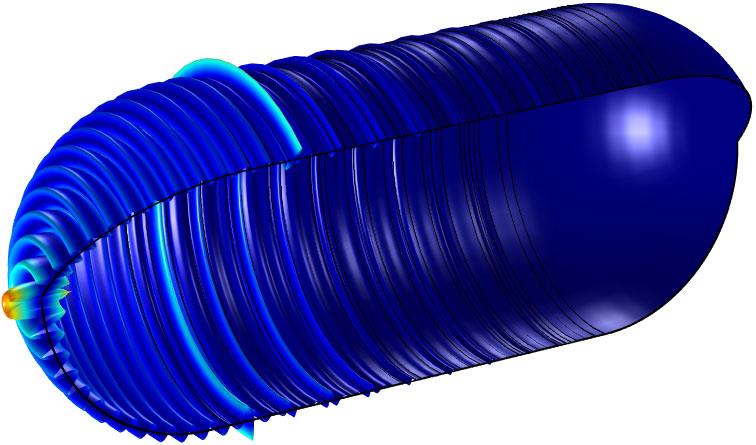GTM papers on acoustic black holes presented at the international congress InterNoise 2019.

The members of the GTM Prof. Oriol Guasch and the PhD student Jie Deng presented two works on Acoustic Black Holes (ABH) at InterNoise 2019, which was held in Madrid (Spain) from 16-19 June.
Those works suggest new designs of ABHs which open the door to further applications for the isolation of vibration transmission in plates and the reduction of Bloch-Floquet waves in periodically supported cylindrical structures.
The oral presentation of the two papers was done by Jie Deng.
The reference of the first paper is:
- Jie Deng, Oriol Guasch and Ling Zheng (2019); “Configurations of ring-shaped acoustic black holes for the isolation of vibrations in plates”, InterNoise2019, June 16–19, Madrid, (Spain),
with abstract:
In many common situations concerning the vibroacoustics of built-up structures, a plate gets excited at a limited region where it is connected to further structural elements, like beams or other supporting elements. To avoid the transmission of vibrations to the plate one would typically resort to elastic junctions. However, that is not always feasible and, even if it was, they may not provide enough isolation. It is proposed herein to increase the latter by resorting to ring-shaped ABH configurations consisting in, at least, one annular strip with a power-law decaying profile in the radial direction. The ring-shaped ABH strip is used to surround the external excitation area and prevent the transmission of vibrations to the rest of the plate. Designs including radial stiffeners are also presented to avoid excessive structural weakening. The numerical simulations carried out using a Rayleigh-Ritz approach with a Gaussian expansion for the flexural displacement field, show that the ring-shaped ABH constitute an efficient way to enhance vibration isolation in plates.
The reference of the second paper is:
- Jie Deng, Oriol Guasch, Laurent Maxit and Ling Zheng (2019); “Annular acoustic black holes to reduce propagative Bloch-Floquet flexural waves in periodically supported cylindrical shells”, InterNoise2019, June 16–19, Madrid, (Spain),
with abstract:
Current designs of acoustic black holes are mainly intended for straight beams and flat plates. However, many structures of interest in naval and aeronautical applications essentially consist in a periodically stiffened cylindrical shell, which could benefit from the acoustic black hole (ABH) effect to reduce vibrations and noise radiation. In this work, we suggest the design of annular ABHs to that purpose. To test the feasibility of such annular ABHs we consider the idealized case of a periodically simply supported cylindrical shell of infinite length. Such a structure allows for the propagation of Bloch-Floquet flexural waves at some passbands, which can play an important role in the radiation of noise at the far field. By means of wave finite element models, we show that the proposed annular ABHs constitute an effective way of reducing the shell flexural motion.
The research above emerged as a collaboration between the Engineering Department of La Salle, Universitat Ramon Llull, and the Automobile Engineering Department from the Chongqing University, China. In the second work the collaboration was extended to the Laboratoire Vibration-Acoustique from the INSA at Lyon, France.

Figure 1: Vibration concentration at an ABH ring set on a plate avoiding when exciting the center of the plate. Propagation outside the ABH is mostly avoided.

Figure 2: Closed periodically supported cylindrical shell excited at its end point at the third frequency passband. The annular ABH prevents the propagation of Bloch-Floquet waves.
This work has been completed while Jie Deng was performing a two-year PhD stay at La Salle, Universitat Ramon Llull, funded by the National Natural Science Foundation of China, China under Grant (51875061) and the China Scholarship Council, China (CSC No. 201806050075). The authors gratefully acknowledge this support as well as the in-kind assistance from La Salle, Barcelona, Spain, Universitat Ramon Llull, and the Chongquing University to make that collaboration possible. Prof Oriol Guasch would also like to thank l’Obra Social de la Caixa and the Universitat Ramon Llull for their support under grant 2018-URL-IR2nQ-031.